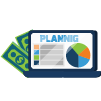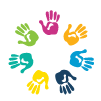Literacy has traditionally been defined as a person’s ability to read and write. These skills can be improved over time and need to be practiced on a regular basis. Today, in a continually changing and digitalizing world that is rich in data, literacy is seen as a way to comprehend, interpret, produce and communicate what you have read, seen, and/or heard. These abilities are important because they are key to a sustainable and inclusive life for every individual. Their lack, however, leads to marginalization and exclusion.
According to UNESCO, at least 773 million people worldwide are illiterate and this leads to most of them being excluded from full engagement in their communities and society.
What is the Literacy Rate?
The literacy rate is the proportion of people aged 15 and above who are literate, represented as a percentage of the comparable population, either in total or by gender, in a specific nation, territory, or geographic region at a concrete moment in time.
A high literacy rate indicates that there is a great primary education system and/or programs that have offered a significant part of the population the opportunity to use the written word and perform simple arithmetic calculations on a daily basis and to continue to acquire new knowledge.
Literacy increases labor-force participation, improves child and family health and nutrition, decreases poverty, and enhances life opportunities.
See also: Africa hosts eight out of the 10 countries with the lowest literacy rate
Here’s what can be done to improve the literacy rate.
How to improve literacy rates
There are several steps that governments can take to help their populations to achieve literacy. Here are some of these based on the UNESCO strategy for Youth and Adult Literacy:
🔹 Educate children in their native language and promote national literacy
In many developing nations, lessons at school are taught in English, French, or other non-native languages. Most of the time, teachers are not fluent in the language in which they teach. This means that the education provided is not at its best.
Over 2,000 languages are still commonly spoken throughout Africa.
English should also be taught but there is a need for proficient teachers who are able to teach subjects in both English and native languages.
🔹 Make use of technology
In the digital age, everybody should make use of smartphones, computers, smart TVs, and other useful technologies. However, there are nations where people and schools lack the necessary technology that can help with education. Building digital libraries in schools would benefit both teachers and children.
🔹 Inspire a passion for reading instead of just handing out books
Nurturing a love of reading is the first step toward improving literacy, yet many development efforts overlook this in favor of supplies other than books.
For instance, the NGO, We Love Reading, in Jordan is dedicated to developing a love of reading in children by training local volunteers to read to them. The organization places a major emphasis on storytelling in native languages.
🔹 Focus on adult education as well
For many years, donor financing for literacy has been centered around children with little attention paid to adult literacy.
With this in mind, there is a need for a comprehensive approach to literacy that encourages adults to become literate while simultaneously emphasizing the role of education within the family.
UNESCO promotes literacy globally
UNESCO’s attempt to promote literacy in youth and adults represents an essential component of both self-improvement and the 2030 Agenda for Sustainable Development. With this in mind, the organization does the following:
- Creates robust foundations by emphasizing early childhood education
- Establishes quality basic education
- Improves functional literacy levels for people who are deficient in fundamental reading abilities
- Creates literate environments
Types of Literacy
 Numerical Literacy
Numerical Literacy
This is the ability to utilize fundamental maths in everyday situations as well as the skill to use numbers to find solutions or manage funds. Numerical literacy is closely related to financial literacy and entails the following:
- Comprehending charts and diagrams
- Finding solutions to problems
- Checking answers
- Describing solutions
- Applying logic
 Digital Literacy
Digital Literacy
This is the ability to productively use technological devices to solve issues, navigate numerous online resources, comprehend how technology functions, and make use of various gadgets to solve problems.
This does not mean that people are inherently digitally literate as although they are capable of using technology and surfing online resources, digital literacy relies on what they gain from doing so.
 Health Literacy
Health Literacy
This aspect involves a clear vision of the healthcare system, including:
- Medicines
- Getting in touch with experts from the healthcare sector
- Obtaining the necessary assistance
Without sufficient health literacy skills, people may encounter serious problems such as taking the wrong medicine and having issues with following doctors’ advice regarding lifestyle, nutrition, and so on.
 Financial Literacy
Financial Literacy
This refers to possessing sufficient knowledge and skills to carry out responsible financial choices. This includes:
- Knowing how money works and applying finances in real life
- Making plans for and being able to administer personal finance
- Being self-assured enough to make critical decisions
- Benefitting from the available resources
 Media Literacy
Media Literacy
This refers to the ability to comprehend the information received from various sources including television, radio, videogames, films, and social media. Essentially this entails comprehending that:
- Media is created with the goal of making a person think
- Different people may have different opinions on the same topic
- Building media is a business
- The type of content varies based on the medium
 Cultural Literacy
Cultural Literacy
This type of literacy refers to the ability to comprehend all the subtleties that arise from residing or working in a certain society. It entails comprehending the language and norms that make up a way of conducting yourself and interacting with other members of society. Each culture has its own cultural literacy.
A culturally literate person possesses the skills and knowledge to prevent misconceptions and interact effectively with people from other cultures.
 Emotional Literacy
Emotional Literacy
Emotional literacy entails the understanding of one’s own sentiments as well as learning how to manage these. This includes the ability to remain calm when angered or to convince oneself when in doubt. It also includes empathy which is the ability to be sensitive to the feelings of others.
 Physical Literacy
Physical Literacy
Physical literacy represents the basic movement abilities that all people require such as running, throwing, and jumping. These abilities provide people with the confidence to take part in numerous activities in settings that promote the healthy growth of an individual.
Final word
Literacy is important in eliminating gender, racial, national, and religious inequality which benefits one group of people over another in terms of access to school, property, work, healthcare, legal representation, and civic participation. It is also an instrument that assists people to move out of poverty and find jobs that offer sufficient remuneration to support their families. Improved literacy assists everyone regardless of their age, ethnicity, gender, or origin.

